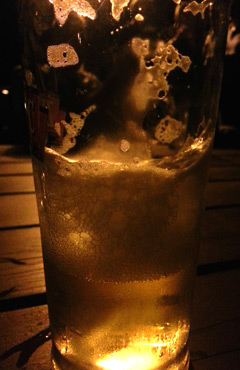 So this was the fifth of five Grodziskie beers I had to drink last Friday in Poland, poured from a two-liter bottle by Andrzej Sadownik, who brewed the beer at home.
So this was the fifth of five Grodziskie beers I had to drink last Friday in Poland, poured from a two-liter bottle by Andrzej Sadownik, who brewed the beer at home.
It was good, but then they all were.
Much has been written about Grodziskie (or Grätzer) and there’s more story ahead. Meanwhile, a few other beer-related photos (I have many non-beer ones from Sunday in Krakow, a very photogenic city) taken during three-plus days in Poland, most of it in Zywiec or nearby.
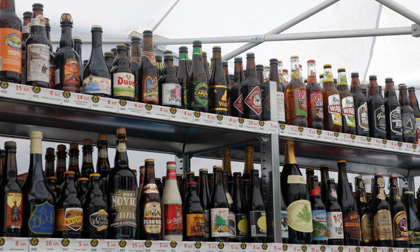
I’ve mentioned bits in pieces about Festiwal Birofilia in various posts during the last year, so won’t list everything again. Instead, visit the festival website. Random photo #1 provides just a glimpse at the very wide range of beer available to take home, and also explains why so many people showed up with crates. There were plenty of beers from the United States we never see in St. Louis (which gets plenty you can’t buy in other parts of the country).
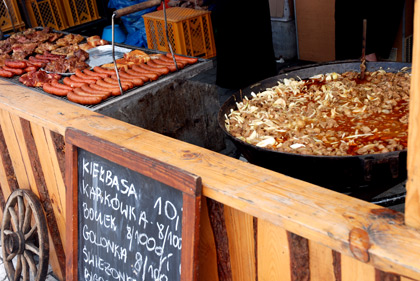
Random photo #2. Food. It was amusing to walk around the tourist area of Krakow on Sunday and see so many places advertising, in English, “authentic Polish food.” There’s fake Polish food out there? Pretty sure everything at this stand in Zyweic was real.
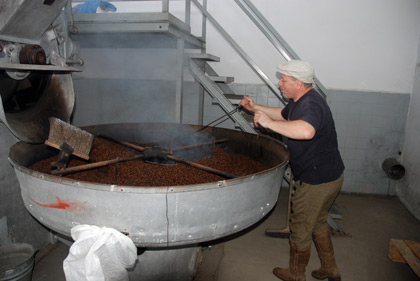
The Zywiec brewery was open for tours throughout the festival, as was its museum. You didn’t have to join an organized group to visit the demonstration where a couple of brewery workers roasted malted barley for use in Zywiec Porter, a splendid beer. This is not how Zywiec does it today, but is it a cool piece of equipment. It would take something larger to roast all the brewery needs to make 30,000 hectoliters annually at its smaller Cieszyn brewery (the Zywiec brewery produces 5 million hectos a year).
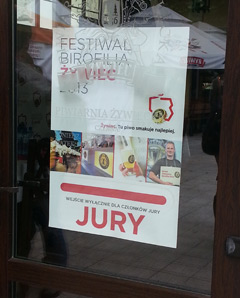 Czeslaw Dzielak’s Imperial India Pale Ale won grand champion, which means it will be brewed at the Cieszyn brewery, released Dec. 6 and distributed nationally. You can read about Dzielak here (easier if your browser has some sort of translation mode). Polish homebrewers seemed equally excited to a) see Dzielak win and b) that a beer definitely outside the Polish mainstream would be available through Zywiec’s distribution network.
Czeslaw Dzielak’s Imperial India Pale Ale won grand champion, which means it will be brewed at the Cieszyn brewery, released Dec. 6 and distributed nationally. You can read about Dzielak here (easier if your browser has some sort of translation mode). Polish homebrewers seemed equally excited to a) see Dzielak win and b) that a beer definitely outside the Polish mainstream would be available through Zywiec’s distribution network.
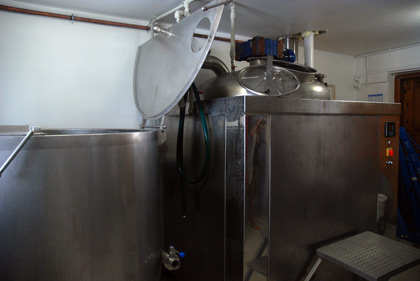
Andreas Richter, quality manager at Weyermann, has been traveling from Bamberg to judge beers at Festiwal Birofilia for six years. He keeps coming back because he’s enjoyed watching the interest in beers beyond pale lagers grow, now exponentially.
Like everywhere, it seems, Polish brewers are struggling to define “craft beer” and “craft brewery.” Restaurant breweries have been around for a while, but quality (apparently equipment as well as beer) is an issue. One alternative is contract brewing. In some cases that simply means handing a brewery a recipe and leaving the rest to its brewers; in others considerably more work (Jan Szala, who has started Browar Szałpiw along with this father, said that his day before the festival included shoveling out a mash tun).
Browar Artezan is the first small Polish brewery founded by homebrewers, opening just in time for Festiwal Birofilia last year. The portfolio has grown since, including even a Grodziskie as well as its impressive Pacific Pale Ale, which appropriately enough shared a tap tower with Anchor Liberty. Pracownia Piwa became the second homebrewer-goes-pro-in-his-own-digs brewery a few months ago.
That’s the Pracownia brewhouse above, a bit of equipment previously used for food processing modified to make beer. Good beer. Stepping into the brewery just outside of Krakow is exactly the same and totally different than walking through the doors of a hundred different small U.S. breweries 15 to 20 years ago.
There’s a dream. The words of the late Greg Noonan echoed in my memory. “When the homebrewers stop entering the profession, and the backyard breweries are squeezed out, then it will become stagnant. You gotta keep getting the guys who say, ‘Cool, I can sell the beer I make. I can do it.'”
Co-owner Tomasz Rogaczewski explained that three years ago he didn’t know it was possible to brew beer at home. Not much more than a year later he had decided he would open a brewery, “to make my dream.”
Rogaczewski seems to always be smiling, and certainly was throughout the festival, pouring his beer inside the main tent, with a good view of the stage when the homebrewing awards were handed out. He was the first to reach Czeslaw Dzielak — who he calls a mentor, finding an even bigger smile explaining most brewers expected Dzielak would have already claimed the prize a year or two before — on the phone and inform him his beer was grand champion. Dzielak was driving at the time, telling his friend not to kid. Then he saw texts begin to fill his phone. “Now I have to pull over,” he told Rogaczewski (in Polish, of course).
Otherwise there’s no pulling off the gas for small breweries right now in Poland. An equipment manufacturer at the festival told Richter he had more than a half dozen orders for small brewing systems in Poland to fill in the next year.
Cue up Sam Cooke.
There been times that I thought I couldn’t last for long
But now I think I’m able to carry on
It’s been a long, a long time coming
But I know a change gonna come, oh yes it will.
*****
Read more about the competition and the festival here and here (I agree that Dwa Smoki, or “Two Dragons” and named for Rogaczewski’s newly born twin sons, was one of the festival’s standout beers).
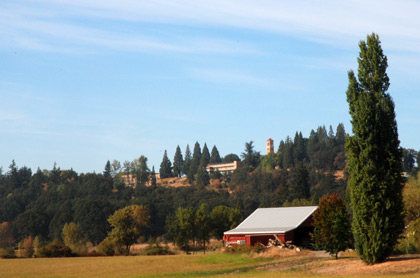
 So this was the fifth of five Grodziskie beers I had to drink last Friday in Poland, poured from a two-liter bottle by Andrzej Sadownik, who brewed the beer at home.
So this was the fifth of five Grodziskie beers I had to drink last Friday in Poland, poured from a two-liter bottle by Andrzej Sadownik, who brewed the beer at home.


 Czeslaw Dzielak’s Imperial India Pale Ale won grand champion, which means it will be brewed at the Cieszyn brewery, released Dec. 6 and distributed nationally. You can
Czeslaw Dzielak’s Imperial India Pale Ale won grand champion, which means it will be brewed at the Cieszyn brewery, released Dec. 6 and distributed nationally. You can 
 Glenn Humphries has posted the roundup for
Glenn Humphries has posted the roundup for